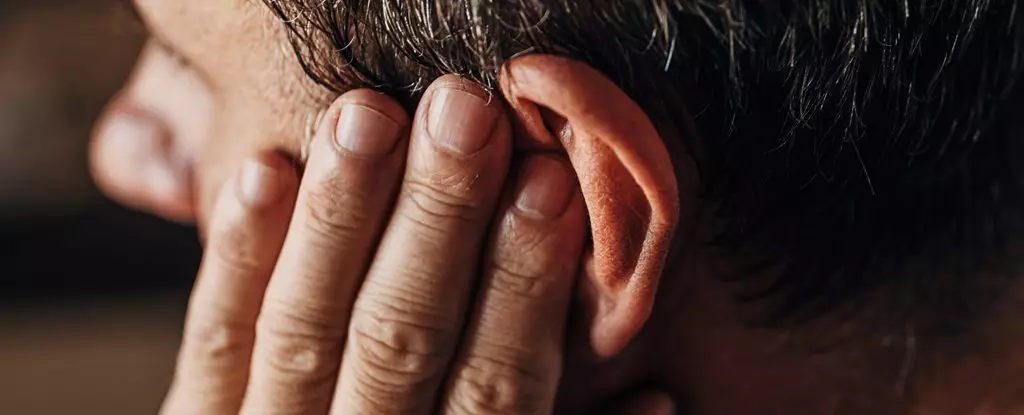Tinnitus affects approximately 15 percent of the global population, trapping countless individuals in a constant cycle of phantom noises—be it ringing, buzzing, or hissing—external soundwaves untraceable to anyone but the sufferer. This auditory illusion is often accompanied by hearing loss, intensifying the resultant emotional distress. For many, living with tinnitus isn’t merely an annoyance; it becomes a significant psychological burden, leading to elevated levels of stress, anxiety, and even depression. Over months and years, the unrelenting noise can morph into a relentless foe, chipping away at one’s quality of life. The complexities of living with this condition extend beyond mere sound; they seep into the very fabric of mental well-being, creating a dire need for an effective management strategy.
The Elusive Nature of Treatment
Currently, there is no definitive cure for tinnitus. This leaves millions of sufferers searching for relief in a barren landscape of ineffective solutions. Available treatments may offer limited respite but seldom provide a cure. As we delve into the nuances of this mysterious condition, one intriguing area of investigation arises: the relationship between tinnitus and sleep. Sleep is not just a biological necessity; rather, it serves as a form of psychological repair that might illuminate paths toward better management of tinnitus.
The Phantom Sound: A Neurological Perspective
The phenomenon of tinnitus is rooted in what neuroscientists term “phantom perception.” Unlike most instances of hallucination—where individuals typically perceive false sensory signals during sleep—tinnitus sufferers face auditory hallucinations while fully awake. This discrepancy raises essential questions about brain functionality and the alterations that occur within its intricate networks in response to tinnitus. Research indicates that specific brain regions involved in auditory processing may be hyperactive in those with tinnitus. Exploring these functionalities can pave the way for innovative remediation approaches.
The Sleep Connection: Unpacking Sleep Mechanisms
The stages of sleep, particularly slow-wave sleep (SWS), are critically important in managing the brain’s health. SWS is known as the restorative phase of slumber, wherein distinct brain wave patterns emerge, promoting healing and recovery among the neurons. For those afflicted by tinnitus, research reveals a concerning overlap: areas of the brain that should ideally quiet down during sleep might remain in high alert, perpetuating the very noise that disturbs their daily lives. This overactivity can lead to disrupted sleep patterns as tinnitus sufferers often experience higher levels of light sleep rather than the desideratum of deep restorative sleep.
Moreover, while patients with tinnitus seemingly enjoy an overall decline in deep sleep, some forms of this restorative sleep might provide a fleeting window of relief. Preliminary research suggests that periods of deep sleep could inadvertently suppress tinnitus symptoms, offering a glint of hope for individuals seeking a semblance of normalcy amidst their challenges.
Investigating Deep Sleep: A Pathway to Understanding
Deep sleep is akin to a protective bastion, wherein significant brain activity shifts are likely to occur. The neurons engaged during prolonged wakefulness may gradually transition into slow-wave dynamics, ultimately creating an environment that might diminish tinnitus. Compellingly, during this phase, the brain tends to limit the frantic communication between hyperactive regions, staving off potential disruptions. Consequently, the possibility emerges that amplifying the quality of sleep could fortify these neural defenses.
However, the relationship between sleep disturbances and tinnitus remains deeply intricate. The intensity of tinnitus can fluctuate dramatically throughout the day, suggesting a connection that deserves rigorous quantification. The potential for unraveling this connection lies in developing tracking methods that simultaneously monitor sleep stages and tinnitus activity. Such advancements could reveal critical insights into the cyclical nature of tinnitus and provide a basis for future therapeutic interventions.
A Glimmer of Hope: Innovative Approaches to Treatment
With this foundational knowledge in hand, fresh approaches may arise that emphasize sleep manipulation as a means of relieving symptoms. One potentially promising method involves sleep restriction paradigms where patients align bedtime with their genuine tiredness—an approach that may bolster slow-wave sleep and help restore the brain’s natural rhythms.
Although much work remains to unravel the intricate interplay between sleep stages—including REM sleep and their unique cerebral patterns—the burgeoning research delineates an exciting frontier. Understanding how brain activity influences tinnitus could usher in personalized treatment methodologies, offering renewed hope to millions grappling with this complex and often misunderstood condition.
In the unending quest for relief, the bond between sleep and tinnitus emerges as a beacon—a compelling interplay worthy of harnessing to reimagine what treatment could look like in the future. The journey to manage tinnitus not only requires consideration of auditory health but acknowledges the beautiful intricacies of the human mind and its necessity for restorative sleep.

